The lion kip: Amazing footage shows brave vet who travels alongside sleeping kings of the jungle… and one mistake could see them wake up
Incredible footage shows the terrifying closeness a wildlife vet has to a pride of sleeping lions as they travel side by side in a plane above Kruger National Park.
Experienced animal control vet Joel Alves admitted his job can be ‘nerve-wracking’ as he shared videos of himself transporting some of the world’s most feared predators.
The sedated big cats appear to be sleeping soundly as they are flown out for treatment, but could wake up at any time if Joel doesn’t administer the perfect dose of immobilization drugs.
As well as patching up big cats at 10,000 feet, the inspirational vet has also hunted down angry rhinos and enormous elephants as he treats their various ailments, and shares videos of the extraordinary tasks he undertakes.
“It’s always exciting and nerve-wracking at the same time, and in those moments when you’re hanging out of a helicopter and shooting some of the most impressive animals across the Earth, you wonder how it can even be considered a job,” he said .
The sedated big cats appear to be sleeping soundly as they are flown for treatment
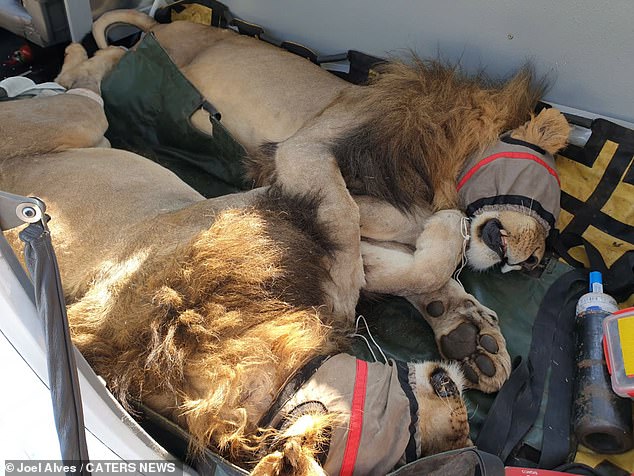
Video shows male lions sitting together in a small plane, their eyes covered with a mask to avoid being disturbed by the light coming through the windows
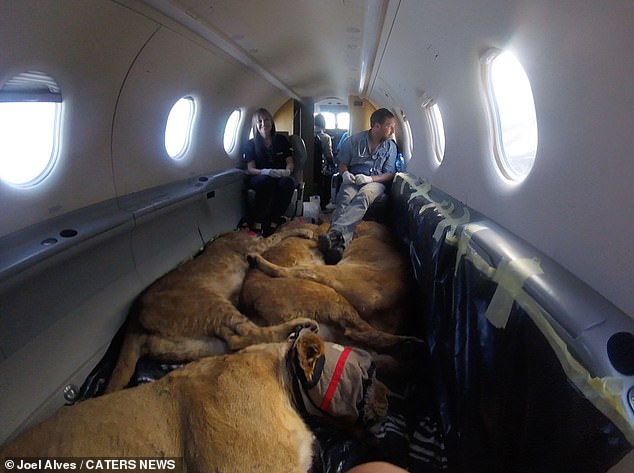
Joel and his colleague are pressed against the side of the plane while the pilots sit quietly in the cockpit despite their menacing load
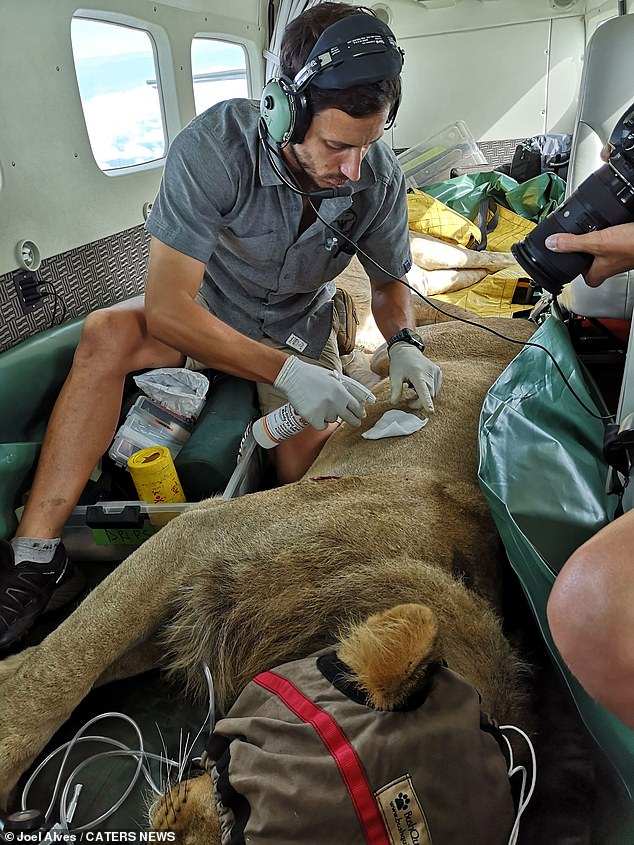
As well as patching up big cats at 10,000 feet, the inspirational vet has also hunted down angry rhinos and enormous elephants while treating their various ailments.
From a childhood dream of becoming a game ranger in the Kruger National Park, Joel, based in Hoedspruit, South Africa, works tirelessly to impact the welfare of some of the largest animals on earth.
The 34-year-old regularly shares videos with his tens of thousands of followers on social media, offering a glimpse into what a day in the life of someone in their unusual job is like.
In one clip, elephants fall on their sides to have their trunks clipped while they are being treated.
In another film he shows lions being helplessly suffocated by sharp metal wire, with the vet coming to the rescue as he shaves the fur, cuts the wires and shields the animal’s eyes.
Discussing his daring flights with some of the most fearsome animals in the wild, Joel joked, “This is definitely the only time you’ll see me fly privately!”
The video shows male lions sitting together in a small plane, their eyes covered with a mask to avoid being disturbed by the light coming through the windows.
Joel and his colleague are pressed against the side of the plane while the pilots sit quietly in the cockpit despite their menacing load.
Another clip shows four lionesses lined up as they are flown for treatment, again masked and anesthetized.
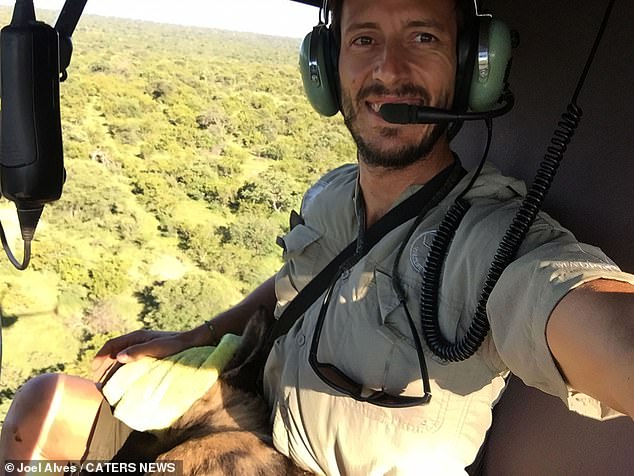
Veterinarian Joel Alves, 34, regularly shares videos with his tens of thousands of followers on social media
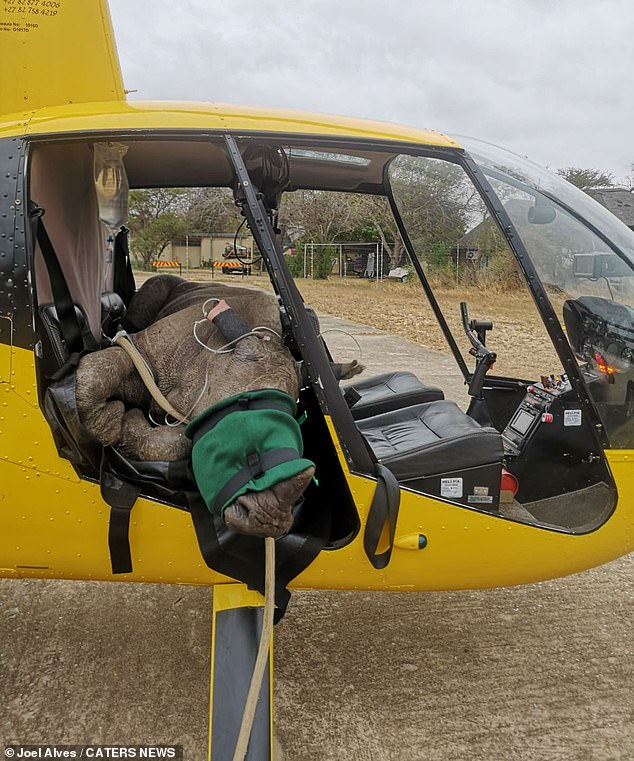
A rhino in the back of a helicopter. Joel works with all kinds of animals that live in the Kruger National Park
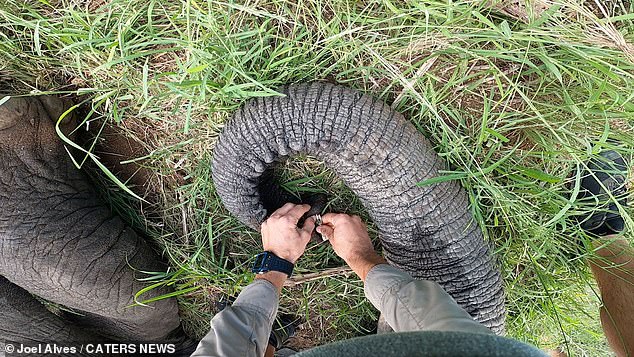
In one clip, elephants fall on their sides to have their trunks clipped while they are being treated
“To many it seems really extreme, but the reality is that the immobilization drugs we have access to make it an incredibly safe procedure for both the lions and the people trapped on the plane with them,” Joel said.
‘Images of rampaging lions running amok on the plane are probably what most people think could happen, but unless you leave your drugs behind, that shouldn’t happen.’
The vet has a work-dominated mentality, but refuses to see the job as work because of the passion he has for it and the rewarding feeling that comes with it.
It is a dream for which he is always willing to take a risk. However, most of the risks come from the equipment and trying not to fall out of the vehicle.
Joel did mention a near-death experience he had with the animals, which surprisingly did not involve any of the predators he works with.
‘The most dangerous moments are when you become blasé and stop concentrating, because you think the situation is one you have experienced a hundred times.
‘The closest I came to a serious injury was a buffalo coming towards me in a small space.
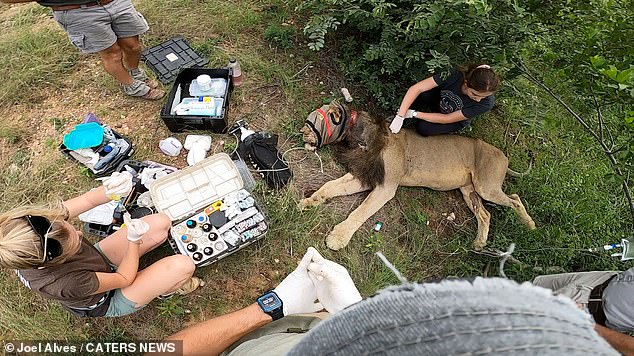
Conservationists work on a lion in South Africa in a clip shared by Joel
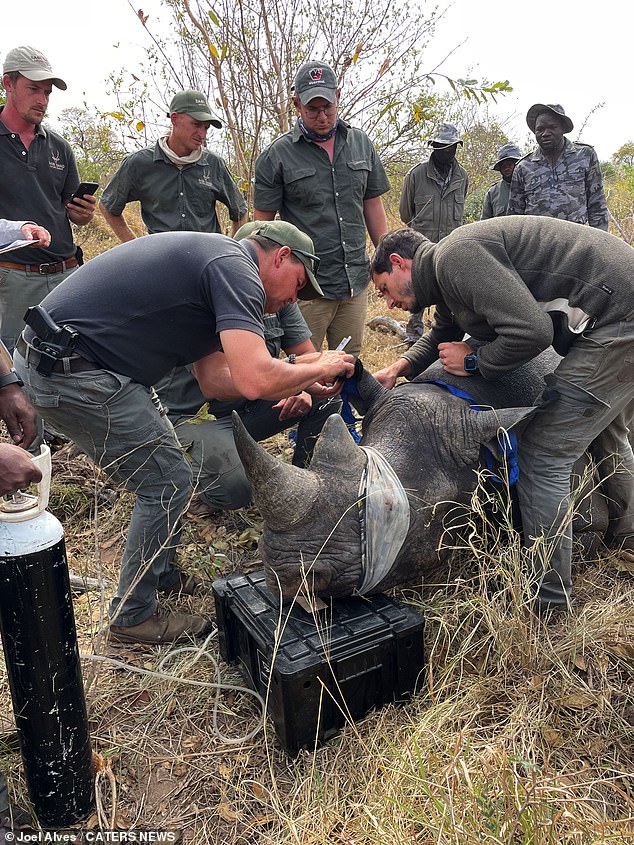
Joel and his team are working on a rhino. He said dehorning the impressive animals can be emotionally draining
‘The buffalo were quite relaxed, and as it was a semi-captive environment I took more liberties than I should have and soon found themselves almost bumping into a point where I had been standing a second earlier before running and out of the way jumped. of the enclosure wall.’
He admitted that some jobs were more difficult and emotionally taxing than others.
“When you dehorn a rhino… in an attempt to reduce the risk of it being poached for its horn, the feelings afterwards are very mixed,” he said.
“Despite feeling that that rhino is a little safer and knowing that your best intentions are to help him, there is always a pit in your stomach at the end because you don’t want to see a rhino live like that.”
The conservation veterinarian said of the teamwork required for his incredible work: “For me, the greatest aspect of this work is not the animals, but the wonderful people who bring these animals together.”
